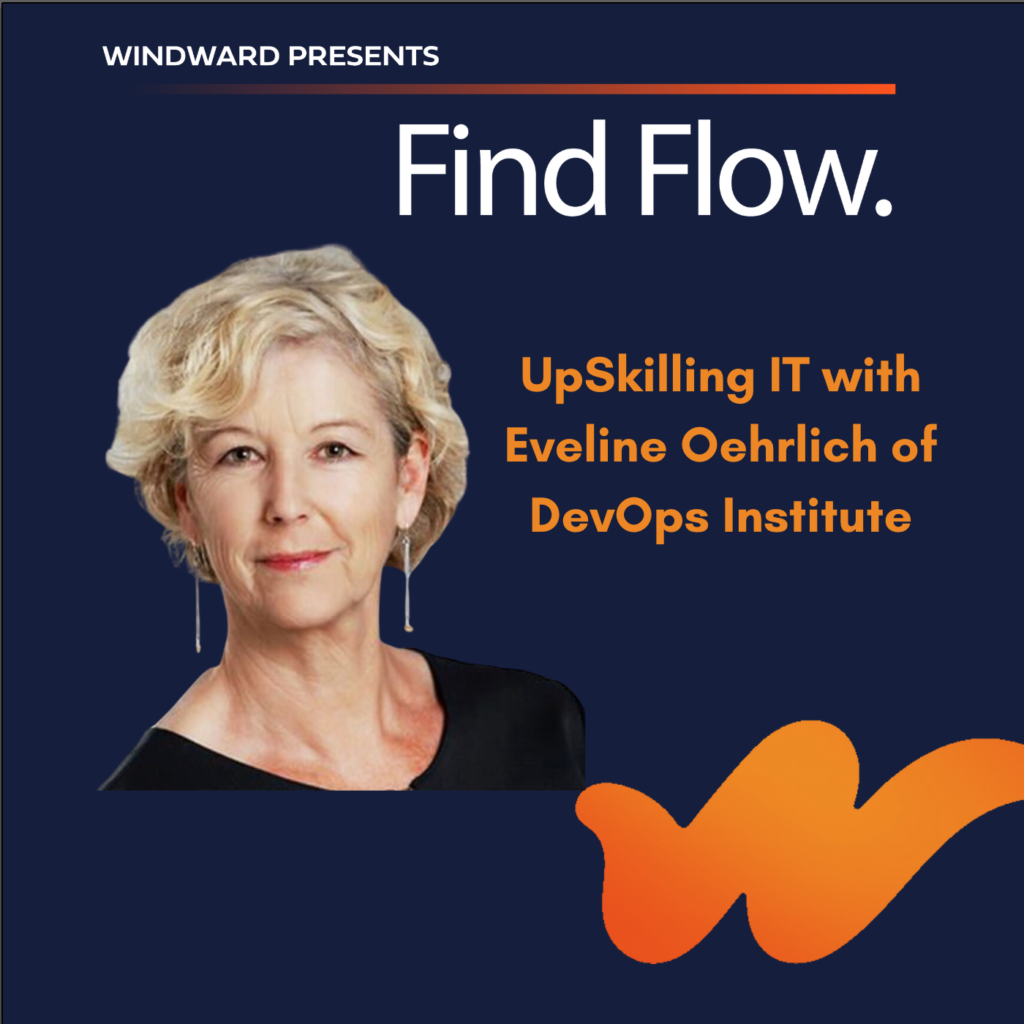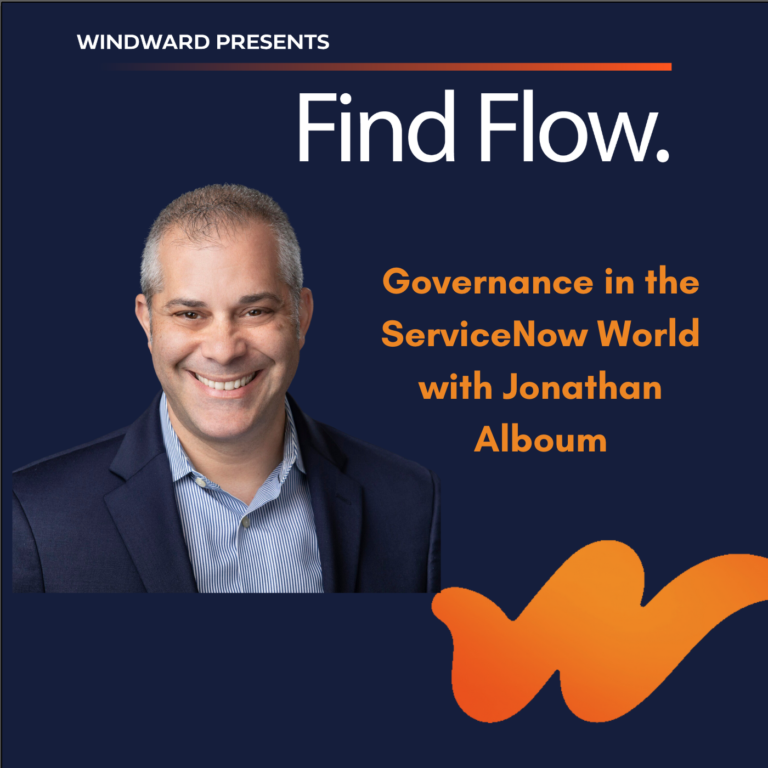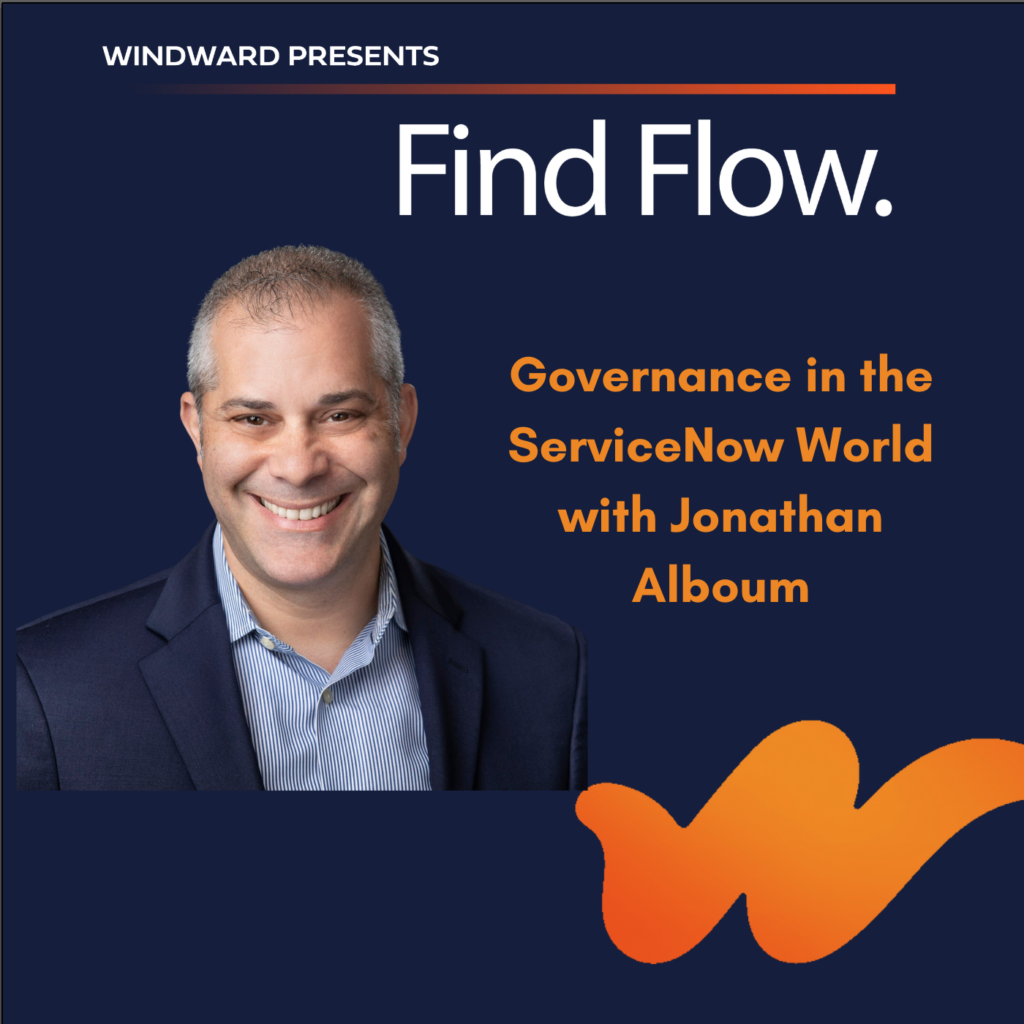Founder of Windward Consulting Group. In addition to Windward, Sean was the Founder and CEO of RealOps, Inc., the pioneer in enterprise management Run Book Automation solutions which was acquired by BMC. Before starting Windward, Sean held senior positions with Predictive Systems and Booz Allen Hamilton.
Our Leadership
Meet our Calmbitious crew.
Leaders who balance an exceptional commitment to achieving success with a balanced state of tranquility and ease.

A get-it-done culture. We don’t speak it, we live it.
We look beyond mere certifications to simply focus on the right people for the job. Who are they? For starters, camaraderie is critical—because we understand that partnership without politics goes further. We hold ourselves to incredibly high standards—and prove our credibility time after time.
We call this exacting, no-drama attitude “calmbitious.” Get to know the team that leads and embodies our culture.

Mafa Amr
General Manager

Mafa is responsible for revenue generation and sales opportunities, as well as overall P&L for all business units. Prior to rejoining Windward, Mafa held a Management position at Nexius Solutions, Booz Allen Hamilton and Predictive Systems and previously spent a decade with Windward where he led the Commercial Sales Team.

Charles Semones
VP of Revenue Growth

Charles is responsible for managing all staff and resources within the Enterprise Services vertical, as well as program and project delivery, and business development. Prior to joining Windward, Charles spent 26 years at Xerox, responsible for the development of network and monitoring technologies and product development.

Bill Driscoll
VP of Customer Success

Bill is responsible for business development, project delivery, partner management and team leadership for his clients in Windward’s Commercial Services business unit. Bill rejoined the Windward team with 20-years’ experience leading professional services teams, notably with SevOne, Capgemini, US Air Force and Windward, focused on intelligent and automated IT service and operations management.

Cody Jelinek
Managing Director - Operations

Cody is responsible for all talent acquisition and resource management. Prior to joining Windward, Cody held various senior positions in executive search firms where he oversaw and led successful recruiting departments. Cody brings extensive experience and expertise in Technical Recruiting, Customer Relationship Management, and IT Service Management.

Pete Tony
Chief Financial Officer

Pete is responsible for maximizing the return on financial assets by establishing financial controls, policies, procedures, and reporting systems. In addition, Pete monitors and confirms financial condition through both internal and external audits and achieves budget objectives by scheduling expenditures, analyzing variances, and initiating corrective actions. Prior to moving to the role as controller, Pete spent 15 years as the general accounting supervisor at Windward.

Michele Darwin
Director of Corporate Social Responsibility

Michele is responsible for Windward’s overall CSR strategy to identify, ideate and execute philanthropic, charitable and cause-related initiatives including the Windward Foundation. She maintains all donor and partner relations, fundraising and communications for the Windward Foundation and organizes the District Music Benefit, the foundation’s annual fundraiser. Previously, Michele spend 7 years leading marketing efforts for Windward Consulting Group.

UpSkilling IT with Eveline Oehrlich of DevOps Institute
UpSkilling IT with Eveline Oehrlich of DevOps Institute
Podcast: Play in new window | Download
Subscribe: Apple Podcasts | Google Podcasts | Spotify | RSS | More

“Last year, it was human skills [as the top priority], followed by process skills, followed by technical skills. This year it’s actually quite different. We have process skills, process framework skills such as DevOps, ITIL, SRE… with technical skills as the second priority, then human skills, then leadership skills.”
– Eveline Oehrlich
Eveline Oehrlich is a researcher and the Chief Research Officer at the DevOps Institute. With over 30 years of experience in the IT industry, Evelyn has dedicated her career to understanding the essential skill domains and helping professionals upskill to remain competitive in today’s fast-paced digital world. Eveline is passionate about sharing insights and supporting organizations in adopting the right skills to ensure success in their IT projects.
In this episode of the Find Flow podcast, host Sean McDermott and guest Eveline Oehrlich discuss the importance of upskilling in the IT industry. They delve into the details of a recent report by Evelyn’s firm, which focuses on the essential skill domains and the top must-have skills within these domains. The report also sheds light on the challenges that organizations face in upskilling their employees. With the current economic landscape, the conversation around upskilling is highly relevant for organizations looking to do more with their existing resources and slow down hiring.
“I find it important that people know how and where to upscale to be professionally and humanly ready for the future and for today.”
– Eveline Oehrlich
This Week on Find Flow:
- Upskilling is crucial for IT professionals to stay competitive in today’s rapidly changing digital landscape.
- The skill domains focused on in the report include process/framework skills, technical skills, human skills, leadership skills, and automation skills.
- In the recent report, the must-have skills are prioritized as process/framework skills, followed by technical, human, leadership, and automation skills.
- Challenges around upskilling can be better understood and addressed through in-depth analysis of the must-have skills within each domain.
- The DevOps Institute is now part of PeopleCert, the organization that owns ITIL and Prince2, enabling a stronger focus on process frameworks and certification.
Resources Mentioned:
Find Your Flow in IT Operations
Thanks for tuning into this week’s episode of the Find Flow Podcast. If you enjoyed this episode, please subscribe and leave a review wherever you get your podcasts.
Apple Podcasts | TuneIn | GooglePlay | Stitcher | Spotify | Amazon Music
Be sure to share your favorite episodes on social media to help me reach more IT Operations leaders, like you.
Join me on Facebook, Twitter, Instagram, and LinkedIn. For more exclusive content and information, visit our website. While you’re there, don’t forget to grab your free gift: The 9 Ways to Accelerate Your Service Reliability Strategy.
UpSkilling IT with Eveline Oehrlich of DevOps Institute

Governance in the ServiceNow World with Jonathan Alboum

Governance in the ServiceNow World with Jonathan Alboum
Podcast: Play in new window | Download
Subscribe: Apple Podcasts | Google Podcasts | Spotify | RSS | More
Jonathan Alboum is an experienced IT leader with a wealth of knowledge in governance strategy. As a former CIO and current ServiceNow executive, Jonathan understands the importance of effective governance in maximizing the value of technology investments. With a focus on communication, collaboration, and aligning IT with business objectives, he shares valuable insights and practical advice for organizations striving to enhance their governance practices.
In this episode, Sean and Jonathan delve into the critical role of governance in IT and explore its impact on technology implementations. They emphasize the need for clear communication and understanding between technical and non-technical stakeholders to bridge the gap and ensure successful outcomes. Jonathan highlights the importance of distinguishing between platform managers and product managers in ServiceNow, shedding light on the significance of proper role allocation and demand management. Additionally, they discuss metrics for measuring the effectiveness of governance programs and the value they bring to organizations.
“I can tell you that one of the most important traits of a CIO or an IT leader is the ability to speak in common
language and be able to explain things in a non-technical way.”
~Jonathon Alboum
Today on Find Flow:
- The role of product management and its impact on prioritizing features and functionality.
- Challenges in communication between technical and non-technical stakeholders.
- The need for liberal arts skills in organizations for effective communication.
- Differentiating between platform managers and product managers in ServiceNow.
- The importance of demand management and having a process for handling requirements.
- Metrics to measure the effectiveness of governance programs.
- The significance of adoption, training, and support tickets in evaluating success.
- Balancing the speed of implementation with thorough training and preparation.
Resources Mentioned:
- LinkedIn: Jonathan Alboum – Connect with Jonathan and explore his work at ServiceNow.
- ServiceNow – Visit the official ServiceNow website to learn more about their platform and solutions.
Find Your Flow in IT Operations
Thanks for tuning into this week’s episode of the Find Flow Podcast. If you enjoyed this episode, please subscribe and leave a review wherever you get your podcasts.
Apple Podcasts | TuneIn | GooglePlay | Stitcher | Spotify | Amazon Music
Be sure to share your favorite episodes on social media to help me reach more IT Operations leaders like you.
Join me on Facebook, Twitter, Instagram, and LinkedIn. For more exclusive content and information, visit our website. While you’re there, don’t forget to grab your free gift: The 9 Ways to Accelerate Your Service Reliability Strategy.
Governance in the ServiceNow World with Jonathan Alboum

Navigating CMDB Projects: Lessons Learned from 26 Years in the Field with Charles Semones
Navigating CMDB Projects: Lessons Learned from 26 Years in the Field with Charles Semones
Podcast: Play in new window | Download
Subscribe: Apple Podcasts | Google Podcasts | Spotify | RSS | More

In this week’s episode of the Find Flow podcast, Sean McDermott and Charles Simones, VP of Solutions at Windward Consulting Group, discussed the significance of ServiceNow CSDM (Common Service Data Model) and the challenges organizations face when implementing and managing their CMDB (Configuration Management Database).
The Challenges of CMDB Initiatives: According to Charles Simones, many organizations struggle with CMDB initiatives because they often take on too much without a clear direction. With a set of use cases or outcomes in mind, organizations may populate their CMDB with relevant data, leading to a lack of value for the organization. Simones suggests focusing on valuable data, understanding the desired outcomes, and starting with a specific area or technology to drive maximum success. Additionally, having strong leadership support is crucial when working across different teams within the organization.
Understanding ServiceNow CSDM: ServiceNow CSDM, or the Common Service Data Model, is a framework that helps organize Configuration Items (CIs) and objects within the CMDB. It allows organizations to align their CIs with their services and offerings, whether they are business or technical services. By mapping CIs to these services, organizations can gain better insights into their operational activities, prioritize critical events, and understand service health.
Common Priorities and Challenges: Across Winward Consulting Group’s customer base, the shared priorities and challenges when implementing CSDM include a need for more understanding of how CSDM can help, inconsistent definitions of application and technical services, and better governance processes. By defining a clear taxonomy and aligning the organization’s language, organizations can overcome these challenges and achieve their desired outcomes.
The Engagement Model: To ensure successful CSDM migrations, Windward Consulting Group follows a structured engagement model. Beginning with an assessment to evaluate the current state of the CMDB, identify gaps, and recommend improvements, workshops are conducted to educate stakeholders on CSDM, define taxonomies, and establish governance processes. Throughout the journey, success is measured by predefined outcomes and key performance indicators (KPIs), tracked using dashboards.
The Journey of a CSDM Migration: Implementing CSDM is a journey rather than a one-time event. It requires ongoing maintenance and governance to ensure the CMDB remains accurate and aligned with the organization’s objectives. By setting clear expectations, measuring impact and results, and continuously improving the CMDB, organizations can maximize the value of their CSDM implementation.
ServiceNow CSDM and a well-managed CMDB are essential for organizations seeking to optimize their IT operations and align them with business objectives. Organizations can leverage CSDM to gain valuable insights, improve service delivery, and drive operational efficiencies by focusing on specific outcomes, establishing clear taxonomies, and implementing effective governance processes.
To learn more about ServiceNow CSDM and how Windward Consulting Group can help your organization, visit the Windward Consulting Group.
Charles Semones manages all staff and resources within the Enterprise Services vertical, program and project delivery, and business development. Before joining Windward, Charles spent 26 years at Xerox, responsible for developing network and monitoring technologies and product development.
Connect with Charles:
Connect with Sean
Windward
Ready to level up your tech expertise?
Dive into our upcoming webinars and enriching podcast episodes! From security operations to service reliability, we’re covering it all. Don’t miss out on discussions around generative AI, vulnerability management, GRC, and the ServiceNow Platform’s value drivers. Explore these topics and more over the next 90 days. Head over to Windward Consulting Group to discover our full range of podcasts, webinars, and resources designed to power your growth. Tune in, learn, and lead in the tech space with us!
Find Your Flow in IT Operations
Thanks for tuning into this week’s episode of the Find Flow Podcast. If you enjoyed this episode, please subscribe and leave a review wherever you get your podcasts.
Apple Podcasts | TuneIn | GooglePlay | Stitcher | Spotify | Amazon Music
Be sure to share your favorite episodes on social media to help me reach more IT Operations leaders, like you.
Join me on Facebook, Twitter, Instagram, and LinkedIn. For more exclusive content and information, visit our website. While you’re there, don’t forget to grab your free gift: The 9 Ways to Accelerate Your Service Reliability Strategy.
Navigating CMDB Projects: Lessons Learned from 26 Years in the Field with Charles Semones

Windward Achieves ServiceNow App Engine Product Line Achievement (PLA)
Windward Achieves ServiceNow App Engine Product Line Achievement (PLA)
Windward advances in the ServiceNow Consulting and Implementation Partner Program to help provide a robust platform for creating custom applications tailored to their specific needs.
Herndon, Virginia — April 16, 2024 — Windward today announced it has advanced in the ServiceNow Consulting and Implementation Partner Program to an App Engine PLA to help organizations establish a flexible, scalable, and efficient platform for building custom applications that drive digital transformation, improve operational agility, and enhance business outcomes. The partnership enables Windward to utilize its industry expertise and deep implementation knowledge to help customers accelerate digital transformation through the Now Platform.
The revamped ServiceNow Partner Program recognizes and rewards partners for their varied expertise and experience in driving opportunities, reaching new markets, and helping joint customers in their digital transformation efforts.
Windward is committed to helping IT departments evolve from cost centers into value drivers. ServiceNow App Engine enables organizations to develop high-impact applications that deliver improved operational efficiency and increased employee productivity while empowering development teams to adapt to evolving business needs easily.
“Unlocking the true potential of digital transformation with App Engine and AMS PLA within the Now Platform seamlessly bridges the gap between innovation and Service Reliability. The ServiceNow platform accelerates the journey towards unparalleled efficiency, agility, and customer satisfaction” – Charles Semones, VP of Solutions.
“As a Consulting and Implementation Partner, Windward’s expertise in consulting and implementation focused on Service Reliability is essential to scaling and extending ServiceNow solutions to new markets,” said Michael Khoury, senior director of partner programs at ServiceNow. “We are thrilled to partner with Windward to deliver a seamless experience to solve some of our customers’ biggest digital transformation challenges.”
Consulting and implementation partners leverage industry or domain expertise to guide customers in introducing and utilizing ServiceNow solutions to help their businesses grow and succeed. Partners use ServiceNow resources to influence deals, track technology deployments, and drive the adoption of new solutions.
About Windward
Founded in 1997, Windward Consulting Group has worked with more than 500+ global enterprises, telecommunication providers, and the Federal Government. Our focus on IT service management, service deployment, and operations management makes us a unique partner for enabling IT Operations transformation across Commercial and Government clients.
ServiceNow, the ServiceNow logo, Now, Now Platform, and other ServiceNow marks are trademarks and/or registered trademarks of ServiceNow, Inc. in the United States and/or other countries.
Contact Information
Anne Standfest
anne.standfest@windward.com
Windward Achieves ServiceNow App Engine Product Line Achievement (PLA)

Balancing Corporate Efficiency and Security with Privacy in an AI and Security Environment with Scott Sereboff of Deeping Source

Balancing Corporate Efficiency and Security with Privacy in an AI and Security Environment with Scott Sereboff of Deeping Source
Podcast: Play in new window | Download
Subscribe: Apple Podcasts | Google Podcasts | Spotify | RSS | More

Scott Sereboff is a veteran in the tech industry, with over 35 years of experience in building backend telecom networks, hyper-converged infrastructure, and the security industry. He is currently the General Manager of Deeping Source, a video surveillance and data anonymization company that utilizes AI. Scott is an advocate for AI and privacy, having developed a strong set of beliefs about the potential benefits and risks of AI. He is also the host of his own podcast, “The Privacy of Me,” where he discusses topics related to privacy and technology. Scott holds a degree from the University of Texas and is based in Austin.
In this episode of the Find Flow podcast, host Sean McDermott talks with Scott Sereboff about the applications of AI in the IT world and the potential unintended consequences that come with it. They discuss the use of AI in service reliability, including AIOps and SecOps, and how it can supplement human work. They also touch on the topic of AI replacing jobs and the potential for AI to replicate art. Finally, they delve into the issue of privacy in the age of AI, using the example of the White Castle lawsuit to highlight the need for caution.
In Today’s Episode:
- AI is a tool that can reflect the intentions behind its creation. When built to do good things, AI can help supplement human work and provide valuable insights for predictive analytics.
- The promise of AI in the IT world is its ability to handle the things we are inherently bad at, such as monitoring large networks and spotting patterns in data.
- While some jobs may be replaced or changed by AI, there is still a need for human emotion in fields such as art and music.
- The unintended consequences of AI can be seen in the White Castle lawsuit, where the collection of employee fingerprints has led to a privacy lawsuit.
- As AI continues to be integrated into various fields, it is important to consider its potential impact on privacy and take caution in its use.
Connect with Scott:
LinkedIn
Deeping Source
The Privacy of Me on YouTube
Find Your Flow in IT Operations
Thanks for tuning into this week’s episode of the Find Flow Podcast. If you enjoyed this episode, please subscribe and leave a review wherever you get your podcasts.
Apple Podcasts | TuneIn | GooglePlay | Stitcher | Spotify | Amazon Music
Be sure to share your favorite episodes on social media to help me reach more IT Operations leaders, like you.
Join me on Facebook, Twitter, Instagram, and LinkedIn. For more exclusive content and information, visit our website. While you’re there, don’t forget to grab your free gift: The 9 Ways to Accelerate Your Service Reliability Strategy.














